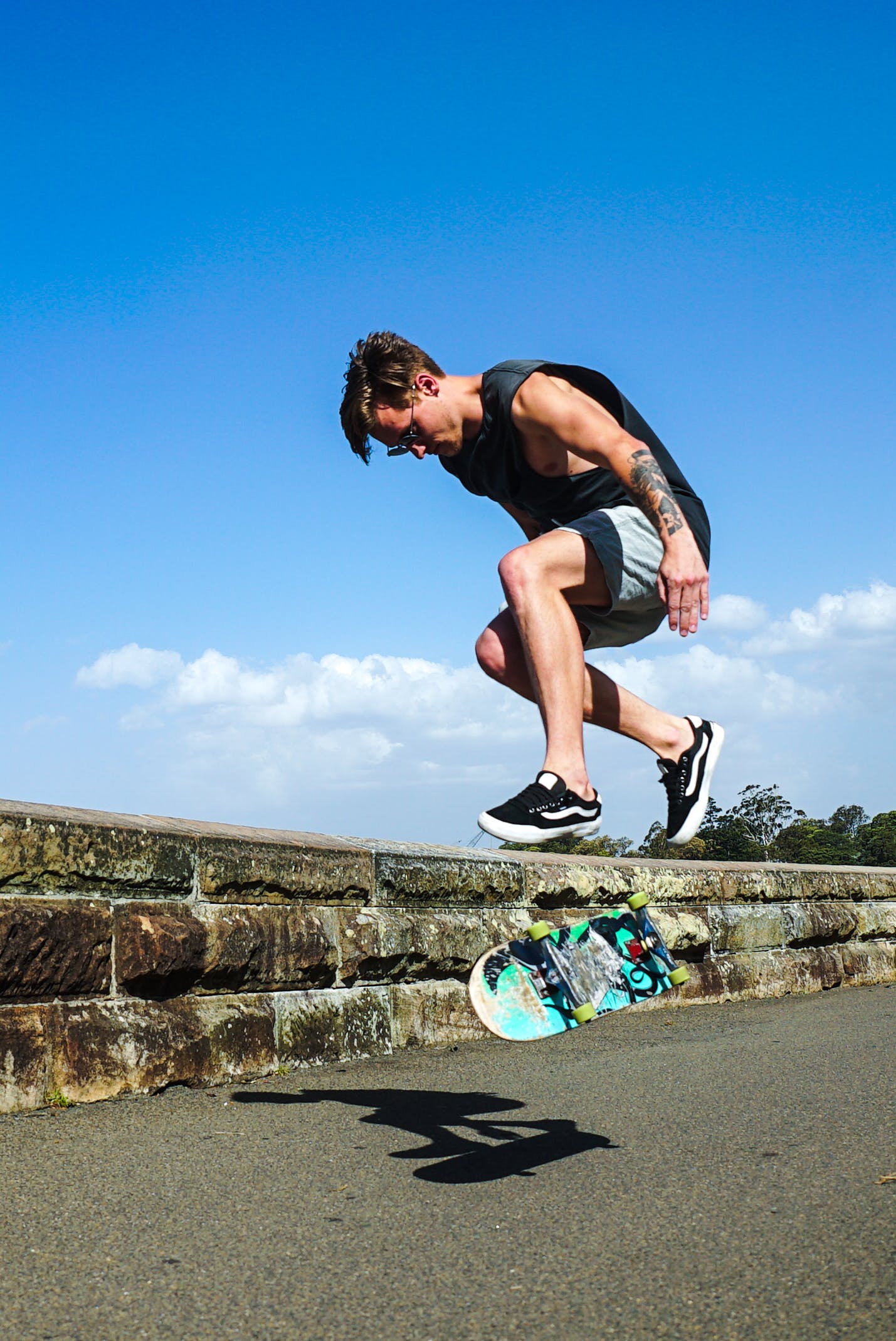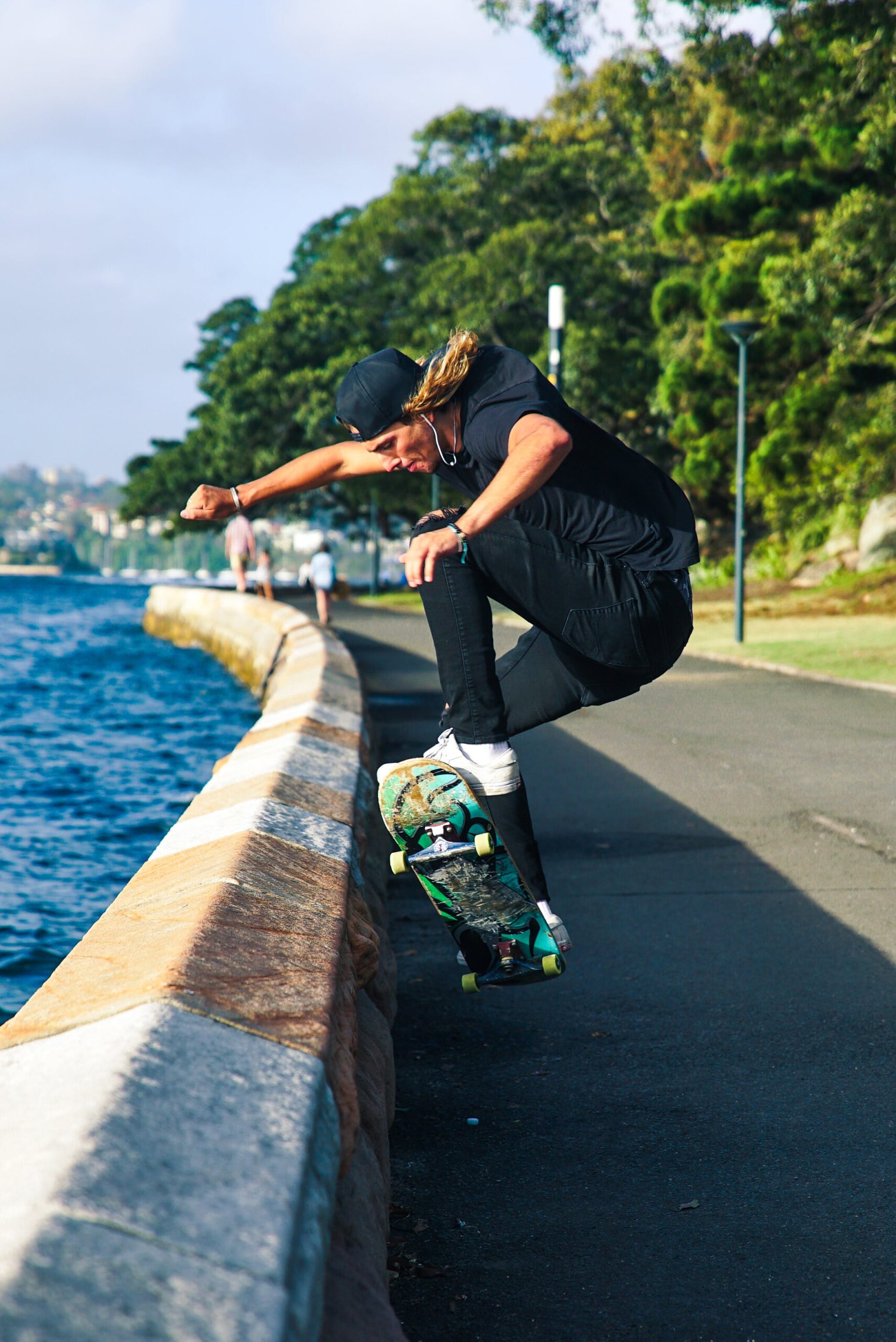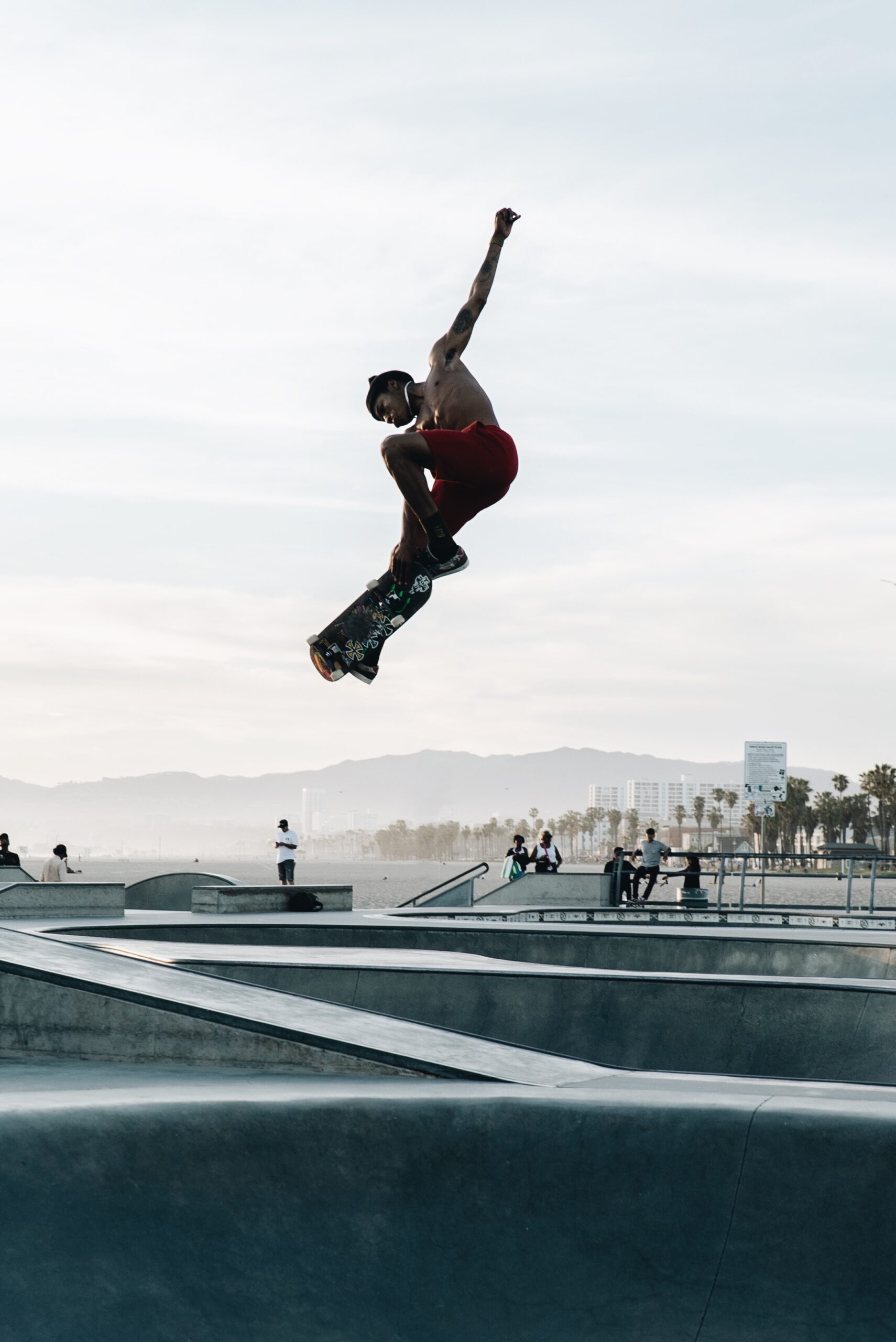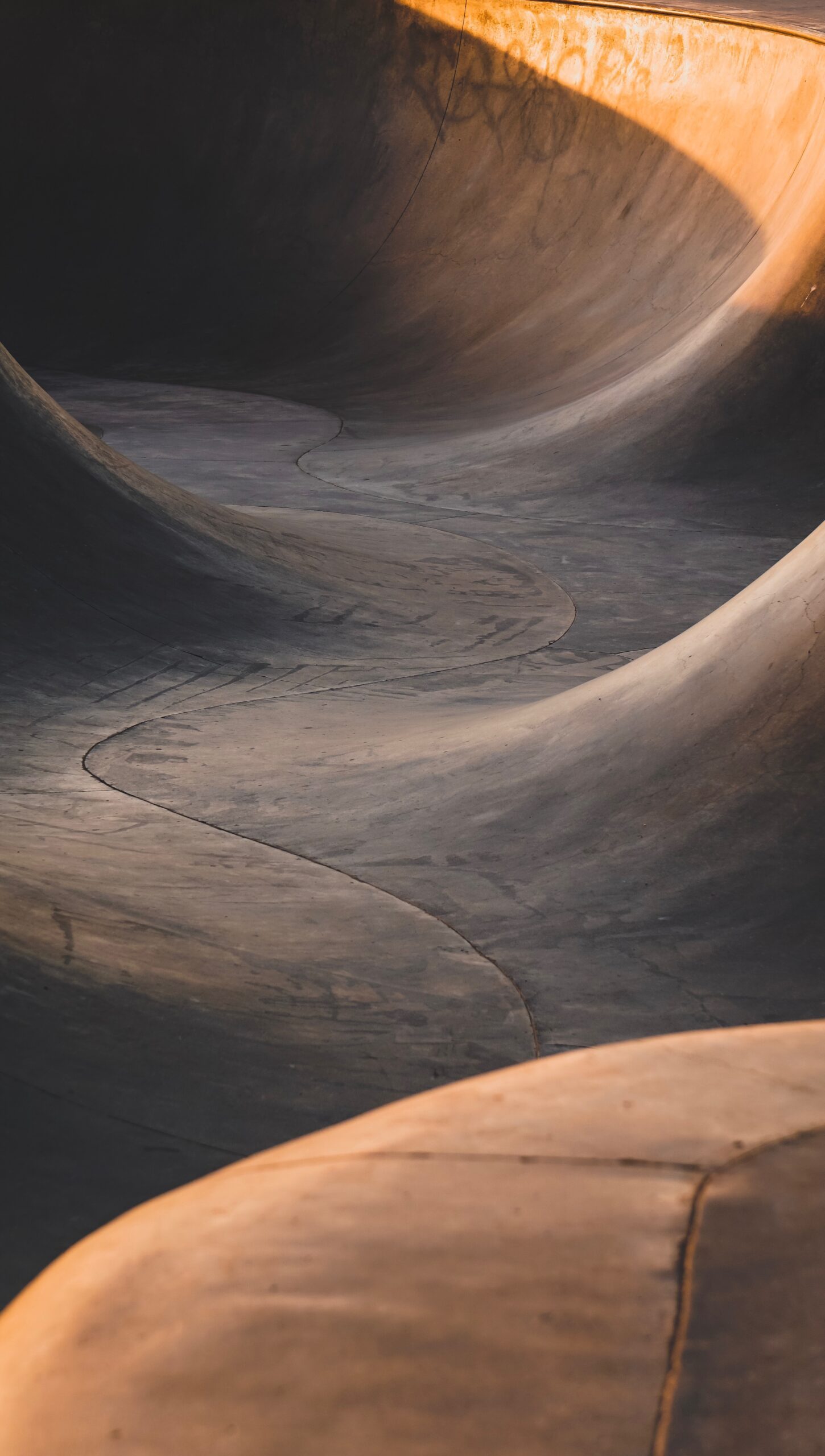Imagine the thrill of effortlessly dropping into a skate park, defying gravity as you conquer rows of ramps and obstacles with confidence. Learning to drop in at a skate park may seem daunting at first, but with the right approach and a dose of determination, you’ll be gliding through the air in no time. In this article, we’ll guide you through the exhilarating process of mastering the art of dropping in, giving you the key steps and tips to help you achieve skate park supremacy. Get ready to elevate your skateboarding skills to new heights!

Choosing the Right Skate Park
When it comes to skateboarding, one of the first steps in learning to drop in at a skate park is choosing the right one for beginners. Researching local skate parks is essential in order to find a park that suits your skill level and preferences. Some skate parks may have larger ramps and more advanced obstacles, while others may have smaller ramps that are perfect for beginners.
Researching Local Skate Parks
Start by researching the skate parks in your area. Look for reviews online and ask fellow skateboarders for their recommendations. Consider factors such as the size and layout of the park, the variety of obstacles available, and the overall atmosphere. Some parks may have a more laid-back and friendly vibe, while others may be more competitive and crowded. Find a park that aligns with your personal style and comfort level.
Selecting a Park Suitable for Beginners
As a beginner, it’s important to choose a skate park that caters to your skill level. Look for parks that have smaller ramps and obstacles that are more suited for learning and practicing basic skills. These parks often have designated areas for beginners, ensuring a safe and supportive environment for those who are just starting out.
Considering Safety Measures at the Park
Before visiting a skate park, it’s crucial to consider the safety measures in place. Look for parks that enforce rules and regulations, such as mandatory helmet usage and the presence of park monitors who can provide assistance and guidance. Additionally, check if the park has proper lighting, well-maintained surfaces, and clear signage to ensure a safe skateboarding experience.
Gathering the Necessary Equipment
Once you’ve chosen a skate park, it’s time to gather the necessary equipment to begin your drop-in journey. Here are a few essential items you’ll need:
Skateboard Selection
Choosing the right skateboard is crucial for a successful drop-in. Look for a skateboard that suits your height and weight, as well as your skill level. Beginners often start with a wider and more stable deck, which provides a better balance and stability. Consider seeking advice from local skate shops or more experienced skateboarders to ensure you select the right board for your needs.
Protective Gear: Helmet, Elbow Pads, Knee Pads, Wrist Guards
Wearing protective gear is a must when learning to drop in at a skate park. A helmet should be your top priority, as it protects your head from potential injuries. Elbow pads, knee pads, and wrist guards are also essential to protect your joints and prevent fractures or sprains in case of falls or accidents. Invest in high-quality gear that fits properly and provides adequate protection.
Wearing Appropriate Clothing
When skateboarding, it’s important to wear comfortable and appropriate clothing. Opt for clothing that allows freedom of movement, such as loose-fitting pants or shorts and a t-shirt. Avoid wearing baggy clothing that could get caught on your skateboard or obstruct your movements. Additionally, choose supportive and durable skate shoes that provide good grip and protect your feet.
Mastering Basic Skateboarding Skills
Before attempting a drop-in, it’s crucial to master basic skateboarding skills. These skills will not only improve your overall skateboarding ability but also ensure a solid foundation for learning more advanced maneuvers. Here are a few fundamental skills to focus on:
Balancing and Pushing
A key skill in skateboarding is balancing on the board and pushing yourself forward. Practice standing on the board with your feet shoulder-width apart, arms out for balance. Shift your weight between your toes and heels to find your center of gravity. Once you’ve found your balance, practice pushing off the ground with your back foot while keeping your front foot planted on the skateboard.
Turning and Carving
Turning and carving are essential skills for maneuvering around the skate park and gaining control over your skateboard. To turn, shift your weight towards the direction you want to go and lean your body in that direction. Practice carving by making wide curves or figure eights while riding around the park. These skills will help you navigate ramps and obstacles with ease.
Kickturning and Tic Tacs
Kickturning and tic tacs are valuable skills for changing direction and gaining momentum while skateboarding. To perform a kickturn, place your weight on your back foot, lift your front wheels off the ground, and pivot your body to turn the board. Tic tacs involve rocking your weight from the front wheels to the back wheels to generate small bursts of movement. These skills are essential when approaching a drop-in and changing directions on the ramp.
Understanding the Drop-in
Now that you’ve mastered the basic skills, it’s time to tackle the drop-in. The drop-in is a fundamental maneuver in skateboarding that allows you to enter a ramp or bowl from a stationary position. Understanding the drop-in and its purpose is crucial before attempting this challenging maneuver.
Definition and Purpose of the Drop-in
The drop-in is essentially a controlled descent into a ramp or bowl. It allows skateboarders to gain speed and momentum, setting the foundation for more advanced tricks and maneuvers. By dropping in, you overcome the friction and resistance between your wheels and the ramp, maximizing your ability to ride and perform tricks.
Importance of Confidence and Commitment
Confidence and commitment play a significant role in mastering the drop-in. While the maneuver may seem daunting at first, it’s essential to approach it with a positive mindset and a willingness to commit. Develop trust in your skills and your equipment, and believe in your ability to succeed. Remember that confidence comes with practice and experience, so embrace the learning process with determination and perseverance.
Risks and Safety Precautions Involved
As with any skateboarding maneuver, there are risks involved when attempting a drop-in. It’s important to be aware of these risks and take appropriate safety precautions. Falls and injuries are possible, especially for beginners, so wearing protective gear is essential. Additionally, start with small ramps and gradually progress to larger ones as you gain confidence and skill. Always skate within your limits and be mindful of others around you to minimize the risk of accidents.

Mental Preparation
Learning to drop in requires not only physical skills but also mental preparation. Overcoming fear and anxiety, building self-confidence, and visualizing success are key aspects of mental preparation.
Visualizing Successful Drop-ins
Visualization is a powerful technique that can help improve your performance on the skateboard. Before attempting a drop-in, take a few moments to visualize yourself successfully completing the maneuver. Imagine yourself riding smoothly down the ramp, maintaining balance and control throughout the process. Visualizing success can help alleviate fear and build confidence, setting you up for a successful drop-in.
Building Self-Confidence
Building self-confidence is crucial when learning to drop in. Trust in your skills and believe in your ability to accomplish the maneuver. Recognize and celebrate your progress, no matter how small, and focus on your strengths rather than fixating on any limitations or mistakes. Surround yourself with supportive friends and fellow skateboarders who can provide encouragement and guidance along your journey.
Overcoming Fear and Anxiety
Fear and anxiety are natural feelings when attempting a drop-in, especially for beginners. Acknowledge these emotions but don’t let them hold you back. Break down the drop-in into smaller steps, gradually working your way up to the full maneuver. Practice deep breathing exercises to calm your nerves and focus your mind. Remind yourself that everyone starts somewhere, and with time and practice, you’ll overcome your fears and master the drop-in.
Learning the Technique
Now that you’re mentally prepared, it’s time to focus on the technical aspects of the drop-in. Learning the proper technique is essential for a successful and safe maneuver.
Approaching the Ramp: Positioning and Stance
Approach the ramp with a relaxed but focused mindset. Position yourself at the top of the ramp, ensuring that your front foot is just behind the front bolts of the skateboard and your back foot is on or just above the tail. Your shoulders and hips should be squared with the board, facing straight ahead.
Bending Your Knees and Keeping a Low Center of Gravity
Bending your knees and maintaining a low center of gravity is crucial during the drop-in. As you initiate the maneuver, lower your body by flexing your knees and sinking your weight into the skateboard. Keeping a low stance provides stability and balance, allowing for better control and maneuverability.
Leaning Forward and Initiating the Drop-in
To initiate the drop-in, lean your upper body slightly forward, shifting your weight towards the front of the skateboard. As you start moving, maintain your balance by keeping your weight centered over the board. Focus on maintaining a controlled descent while maintaining good posture and balance.

Start with Small Ramps
When learning to drop in, it’s recommended to start with small ramps. Working your way up gradually allows you to build confidence and improve your technique in a safe and controlled manner.
Finding a Small Ramp for Practice
Look for skate parks or skateboarding facilities that offer small ramps or mini ramps designed for beginners. These ramps are typically lower in height and provide a less intimidating environment to practice your drop-ins. Practice on these smaller ramps to get a feel for the maneuver and gain more confidence before attempting larger ramps.
Practicing Mini Drop-ins with Proper Safety Measures
Once you’ve found a suitable small ramp, start practicing mini drop-ins. Begin by focusing on proper technique, including positioning, stance, and balance. As you gain confidence and improve your skills, gradually increase the speed and height of your drop-ins. Remember to always wear protective gear and follow safety precautions to minimize the risk of injuries.
Gradually Increasing Ramp Size
As you become more comfortable and proficient in your drop-ins on small ramps, it’s time to gradually increase the ramp size. Seek out skate parks or facilities that offer ramps of different sizes and complexities. Start with slightly larger ramps and progressively work your way up to more challenging ones. By gradually increasing the ramp size, you’ll continuously push your limits and improve your skills while still maintaining a safe and controlled learning environment.
Perfecting the Drop-in
Perfecting the drop-in is a process that requires practice, analysis, and adjustments. Here are some tips to help you refine your technique and achieve a smooth and confident drop-in.
Analyzing and Adjusting Technique
Pay attention to your technique and analyze your drop-ins. Watch videos of yourself or ask a friend to observe and provide feedback. Look for areas where you can make adjustments, such as body positioning, balance, or weight distribution. Emphasize smooth transitions and a controlled descent. By continuously analyzing and adjusting your technique, you can refine your drop-in and improve your overall skateboarding ability.
Repeating Practice Repetitively
Practice makes perfect, and repetition is key to mastering the drop-in. Dedicate regular practice sessions to focus on drop-ins specifically. Set aside dedicated time each week to work on your skills and build muscle memory. The more you practice, the more comfortable and confident you will become in executing drop-ins. Remember to practice other basic skills as well to maintain a well-rounded skateboarding ability.
Seeking Feedback and Guidance
Don’t be afraid to seek feedback and guidance from more experienced skateboarders or skateboarding instructors. They can offer valuable insights and advice to help you improve your drop-ins. Attend skateboarding clinics or workshops where you can receive professional guidance and feedback. Surround yourself with a supportive community that can provide constructive criticism and motivate you to push your limits.

Building Confidence and Progressing
Once you’ve mastered drop-ins on smaller ramps, it’s time to build confidence and progress to larger ramps. Here are a few steps to help you in your journey of advancing your skateboarding skills.
Gradually Attempting Larger Ramps
With improved skills and increased confidence, challenge yourself by attempting larger ramps. Seek out skate parks or facilities that offer ramps of various sizes and complexities. Progressively work your way up to ramps that are slightly taller and steeper. Pushing your limits gradually will enhance your skills, build confidence, and open up more possibilities for advanced skateboarding tricks and maneuvers.
Experimenting with Different Skate Parks
Expand your horizon by exploring different skate parks in your area. Each park offers unique features, obstacles, and layouts. Experiment with different parks to expose yourself to new challenges and opportunities. Skateboarding in different environments will enhance your adaptability and make you a more versatile skateboarder.
Attempting More Advanced Skateboarding Tricks
As you gain more experience and confidence, consider attempting more advanced skateboarding tricks. Expand your trick repertoire by learning new maneuvers such as ollies, kickflips, or grinds. Practice these tricks on various ramps and obstacles to push your skills further. Remember to always prioritize safety and gradually progress at your own pace.
Reflecting on Progress
Throughout your journey of learning to drop in at a skate park, it’s crucial to reflect on your progress, celebrate achievements, and set new goals.
Celebrating Small Achievements
Take a moment to celebrate and acknowledge your small achievements along the way. Whether it’s successfully landing a drop-in on a larger ramp or mastering a new trick, each milestone is worth celebrating. Recognize the progress you’ve made, no matter how small, and use it as motivation to continue pushing yourself.
Learning from Failures and Mistakes
Failure and mistakes are an inevitable part of learning. Embrace them as opportunities for growth and learning. When you struggle with a drop-in or face challenges, reflect on what went wrong and how to improve. Seek feedback from others, analyze your mistakes, and make adjustments. Remember that every failure is a stepping stone towards success.
Setting New Goals and Challenges
Continuously set new goals and challenges to keep progressing in your skateboarding journey. Whether it’s conquering a larger ramp, learning a new trick, or participating in a skateboarding competition, having goals can fuel your motivation and drive. Break down your goals into smaller, achievable steps, and work towards them consistently. Remember that skateboarding is a lifelong journey, and there will always be new goals to pursue.
In conclusion, learning to drop in at a skate park is an exciting and challenging process. By choosing the right skate park, gathering the necessary equipment, mastering basic skateboarding skills, understanding the drop-in, mentally preparing, learning the technique, starting with small ramps, perfecting the drop-in, building confidence and progressing, and reflecting on your progress, you can embark on a successful drop-in journey. With practice, perseverance, and a positive mindset, you’ll be dropping in with confidence and style in no time. Enjoy the process, stay safe, and have fun skateboarding!


